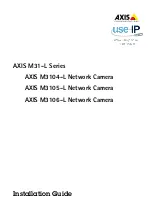
1034
Configuring EtherChannels
Information About Configuring EtherChannels
With destination-IP address-based forwarding, when packets are forwarded to an EtherChannel, they are distributed
across the ports in the EtherChannel based on the destination-IP address of the incoming packet. Therefore, to provide
load-balancing, packets from the same IP source address sent to different IP destination addresses could be sent on
different ports in the channel. But packets sent from different source IP addresses to the same destination IP address
are always sent on the same port in the channel.
With source-and-destination IP address-based forwarding, packets are sent to an EtherChannel and distributed across
the EtherChannel ports, based on both the source and destination IP addresses of the incoming packet. This forwarding
method, a combination of source-IP and destination-IP address-based forwarding, can be used if it is not clear whether
source-IP or destination-IP address-based forwarding is better suited on a particular switch. In this method, packets
sent from the IP address A to IP address B, from IP address A to IP address C, and from IP address C to IP address B
could all use different ports in the channel.
Different load-balancing methods have different advantages, and the choice of a particular load-balancing method
should be based on the position of the switch in the network and the kind of traffic that needs to be load-distributed. In
, an EtherChannel from a switch that is aggregating data from four workstations communicates
with a router. Because the router is a single-MAC-address device, source-based forwarding on the switch EtherChannel
ensures that the switch uses all available bandwidth to the router. The router is configured for destination-based
forwarding because the large number of workstations ensures that the traffic is evenly distributed from the router
EtherChannel.
Use the option that provides the greatest variety in your configuration. For example, if the traffic on a channel is only
going to a single MAC address, using the destination-MAC address always chooses the same link in the channel. Using
source addresses or IP addresses might result in better load balancing.
Summary of Contents for IE 4000
Page 12: ...8 Configuration Overview Default Settings After Initial Switch Configuration ...
Page 52: ...48 Configuring Interfaces Monitoring and Maintaining the Interfaces ...
Page 108: ...104 Configuring Switch Clusters Additional References ...
Page 128: ...124 Performing Switch Administration Additional References ...
Page 130: ...126 Configuring PTP ...
Page 140: ...136 Configuring CIP Additional References ...
Page 146: ...142 Configuring SDM Templates Configuration Examples for Configuring SDM Templates ...
Page 192: ...188 Configuring Switch Based Authentication Additional References ...
Page 244: ...240 Configuring IEEE 802 1x Port Based Authentication Additional References ...
Page 298: ...294 Configuring VLANs Additional References ...
Page 336: ...332 Configuring STP Additional References ...
Page 408: ...404 Configuring DHCP Additional References ...
Page 450: ...446 Configuring IGMP Snooping and MVR Additional References ...
Page 490: ...486 Configuring SPAN and RSPAN Additional References ...
Page 502: ...498 Configuring Layer 2 NAT ...
Page 770: ...766 Configuring IPv6 MLD Snooping Related Documents ...
Page 930: ...926 Configuring IP Unicast Routing Related Documents ...
Page 976: ...972 Configuring Cisco IOS IP SLAs Operations Additional References ...
Page 978: ...974 Dying Gasp ...
Page 990: ...986 Configuring Enhanced Object Tracking Monitoring Enhanced Object Tracking ...
Page 994: ...990 Configuring MODBUS TCP Displaying MODBUS TCP Information ...
Page 996: ...992 Ethernet CFM ...
Page 1066: ...1062 Using an SD Card SD Card Alarms ...
















































